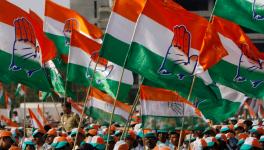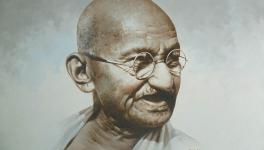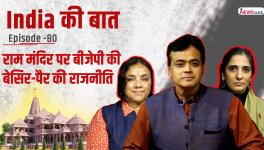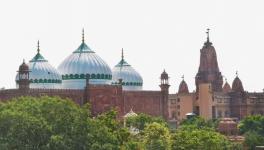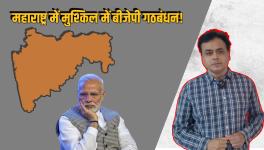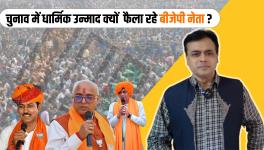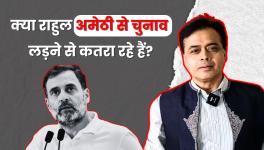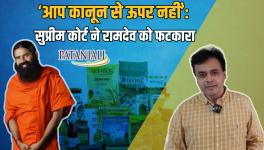Is Taj Mahal not a Part of Indian Culture?
Culture is a fascinating aspect of our life. To understand the culture, one must examine the social life and observes multiple facets of life, food habits, clothes, music, language, literature, architecture and aspects of religion, among other. In a plural diverse country like ours, there is a mosaic which gives us the understanding of the complexity of our culture.
In India there is a heavy intermingling, of facets of cultures contributed by people of different religions. So, what is Indian culture? One can say the totality of plural expressions of people is Indian culture. It is inclusive and has syncretism in all the aspects of social life. This view of Indian culture is held by the Indian nationalists. And till now, most of the time this belief in composite culture guided the practice of those in seats of power.
With the ascendance of Hindu nationalists from last few decades and more so from last three years; the attempt is being made to give sectarian slant to this understanding of our culture. All things which are non-Brahmanical are being sidetracked and undermined. One of the examples of this came in glaringly when Mr. Adityanath Yogi, the Chief Minister of UP, went on to criticize the practice of gifting the replica of Taj Mahal to the visiting dignitaries (June 16, 2017). As per him Taj Mahal is not a part of Indian culture, Yogi upheld the practice of gifting Gita, the Holy Scripture, initiated by Narendra Modi.
Taj Mahal is a UNESCO world heritage site, to be given protection. It is also regarded as one among Seven Wonders of the World. Apart from being a global tourist attraction, it symbolises the great architectural achievements of India. It was built by Emperor Shahjahan in memory of his beloved wife, Mumtaz Mahal. There is another prevailing controversy about this great monument. The propaganda had been done that this was a Shiv temple which has been converted into a mausoleum. It is totally wrong. Historical records and documents tell a different tale.
Shahjahan’s Badshahnama makes it abundantly clear that the structure was built by Shahjahan. A European traveler Peter Mundy writes that the emperor Shahjahan is in deep grief due to the death of his favorite wife and is building an impressive mausoleum in her memory. A French jeweler Tavernier who visited India at that time corroborates this. The daily account books of Shahjahan do give the detailed record of the expenses incurred, like the money spent for marble and the wages for the workers etc. The only base of this misconception of it being Shiv Temple (Tejo Mahalay) is the mention that the land was bought from Raja Jaisingh for a compensation. It is also to be noted that Jaisingh to whom this Shaiva temple is attributed was a Vaishnav, and it is not possible that a Vaishnav king would build a Shaiv temple.
Funnily, first it is regarded as Shiva temple and now it is being asserted that it is not a part of Indian culture? Also, question comes as to why Gita is being given such a primacy? One recalls that earlier, very often, our visiting leaders were gifting the autobiography of Gandhi, ‘My experiments with truth’, to their hosts. Gita is being presented as the representative book from among our many sacred books like, Guru Granth Sahib, Kabir Vani, and writings of Basavanna, Naryan Guru etc. We may find the answer of this from none other than Babasaheb Ambedkar. Ambedkar points out that Gita is Manusmriti in nutshell, which in turn is core of Brahmanism. Ambedkar’s central mission was to fight against the values of Manusmrirti. The other symbol which is being promoted lately is Holy cow. Both these are symbols of Brahmanism, as the current ruling dispensation is promoting Brahmanism in the garb of Hindutva and Hinduism.
As such the Indian culture as understood by freedom movement, Indian nationalist ideology, regards symbols of all religions, regions and languages as Indian. As per that the contributions of Buddhists, Jains, Christians, Muslims, and Sikhs are all part of Indian legacy. This gets reflected in our daily life. As such India is one of the places where all religions have flourished without any discrimination. People have been following these religions from centuries. Some of these were born here and some of these came in and spread through different mechanisms, like the teachings of saints, Sufis, missionaries etc. Islam mainly spread through the teachings of Sufi saints, Christianity through missionaries working for charity in the arena of education and health. All aspects of Indian culture have rich sprinkling from people of different religions.
Our food habits, many of the practices coming from West Asia and other parts of the World, our clothing our architecture has a strong imprint of from people of different religions and different parts of World coming and contributing to the evolving culture. While Bhakti and Sufi are the high point of this interaction, today one can discern the contribution of different religionists in the various rituals and practices of people. One knows that Bhakti saints had following among Muslims as well, while many Hindus visited the Dargahs of Sufi saints. Saint Guru Nanak drew heavily from both the main religious traditions prevailing here.
Mahatma Gandhi had been the best interpreter of Indian culture and Indian history. He did not see antagonism in religions. In his book Hind Swaraj he writes, “The Hindus flourished under Moslem sovereigns and Moslems under the Hindu. Each party recognised that mutual fighting was suicidal, and that neither party would abandon its religion by force of arms. Both parties, therefore, decided to live in peace. With the English advent quarrels recommenced… Should we not remember that many Hindus and Mohammedans own the same ancestors and the same blood runs through their veins?”
Accordingly, the aspects of culture contributed by people of different religions become Indian, in contrast to present dispensation for whom only Brahmanical symbols alone represent this nation, and that’s what Mr. Yogi is trying to assert.
* Views expressed are the author's own. Dr. Puniyani is a human rights defender and a former professor at the Indian Institute of Technology, Bombay (IIT Bombay).
Get the latest reports & analysis with people's perspective on Protests, movements & deep analytical videos, discussions of the current affairs in your Telegram app. Subscribe to NewsClick's Telegram channel & get Real-Time updates on stories, as they get published on our website.










